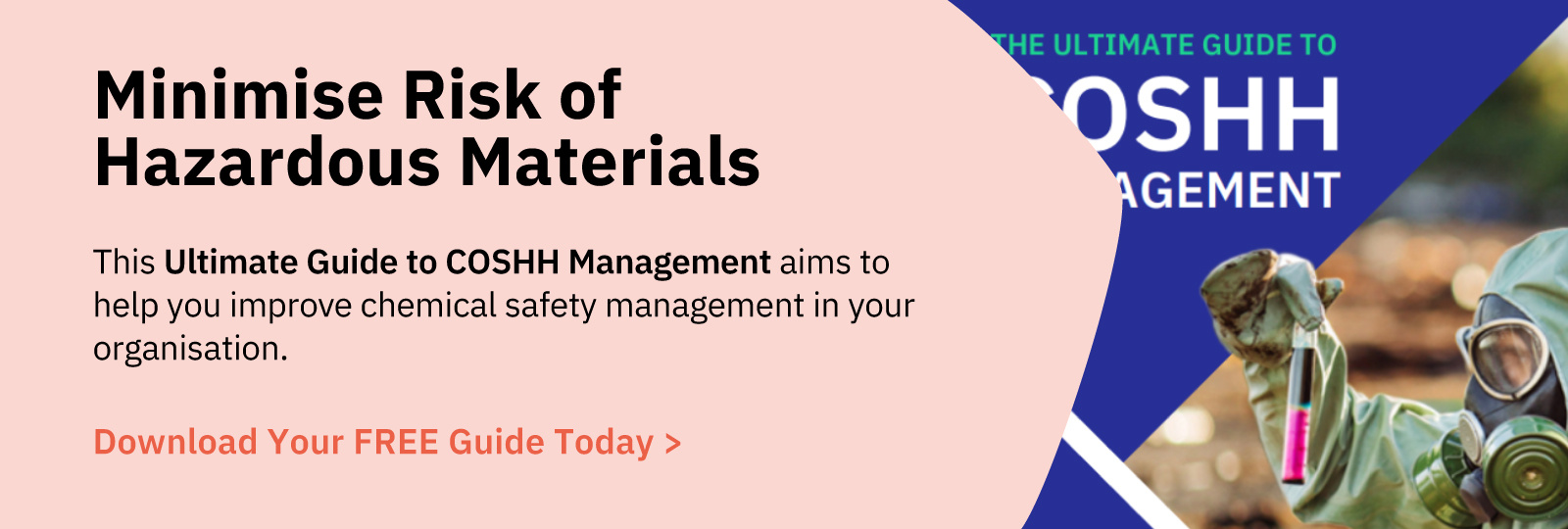
REACH Meaning & Definition
What is REACH?
REACH, which is an acronym for Registration, Evaluation, Authorization, and Restriction of Chemicals, is a regulation of the European Union that came into effect in 2007.
A similar regulation, known as UK REACH, is also applicable in Great Britain. This came into effect in 2021, under the European Union (Withdrawal) Act of 2018. All of the laws from REACH were replicated and instituted across the United Kingdom.

Why is REACH Important?
REACH may apply to more than 143,000 substances, including chemicals in use, manufactured, or distributed throughout the UK and the EU. And, as per the guidelines, REACH can impact both the regulation as well as reporting requirements across the supply chain.
More importantly, REACH completely transfers the onus from the government over to businesses to report on hazards, any steps taken to mitigate hazards and to manage risk in the workplace.
REACH applies to all companies operating within the EU and the UK, including suppliers, manufacturers, and users. Manufacturers are required to provide declarations for any SVHC (Substances of Very High Concern) substances, and also elaborate on safe handling instructions.
Distributors should also have instructions in place so that customers can easily refer to the declarations put forth by the manufacturer, especially relating to any specific labeling requirements.
The primary objective of REACH is to improve human health and to offer better protection to the environment by identifying both physical and intrinsic properties of various chemical substances.
REACH requires the industry to establish safety protocols and to ensure that adequate safety information is available for all users. In the EU, it is regulated by the European Chemicals Agency (ECHA), which manages the central database.
REACH also requires the substitution of harmful and dangerous chemicals to improve safety, requiring companies to look for better and safer alternatives.
Explaining REACH
Now, let’s look at each of the different sections of REACH and elaborate on what they mean.
Registration
Registration involves the series of steps that companies take to identify any substances that they manufacture or use within the UK or the EU. This is applicable to all constituent substances as well as any substances used in the mixtures.
Each substance can be registered only once, even if it’s going to be used across multiple industries. Since it’s been around for almost 15 years, many of the registrations have already been filed.
Evaluation
Evaluation is the next stage, because all of the registered information needs to be properly evaluated for completeness and accuracy. For instance, the registration must include details of tests conducted, any compliance-related proposals, and any identified risks to health or the environment.
Evaluation is necessary because it helps achieve one of several objectives:
- It confirms compliance and requires no further action from the authorities
- The authorities may request further information before making a decision
- The authorities may decide to draft a final decision
Authorization
After evaluation is completed, the next step is authorization. All SVHCs are given priority to analyze if they need to be recommended for authorization. If a substance is recommended for authorization, a comment period ensues, which lasts for 90 days.
It’s important to note that even after the substance has been added to the list, it’s still not authorized for use. It undergoes further reviews during the authorization process.
Restrictions
In certain cases, REACH applies restrictions on chemicals, banning them for use, or severely limiting it until it fully complies with the restriction. Before a restriction is applied, there’s a brief period for public comments.
A Business’ Duties Under REACH
There are several duties that businesses have under REACH. For starters, businesses are required to identify all risks and identify measures for managing these risks to ensure that the use of such substances is safe.
It’s also important for the business to communicate their risk mitigation steps to the general users. In some cases, business roles changed when companies moved from EU Reach to UK REACH, making it important for companies to conduct a re-evaluation.
Exemptions and Provisions
There are a few specific exemptions for substances that don’t fall under REACH. These include:
- All radioactive substances
- Any non-isolated intermediates
- Waste materials
- REACH does not apply to substances being transported
- Certain low-hazard substances that are naturally occurring within the environment
- Substances that are being supervised by customs
Certain substances, on the other hand, have specific provisions within UK REACH. These include:
- Additives in food or foodstuffs
- Any veterinary or human medicines
- Substances that are used for conducting research and development
- Isolated intermediates
- Biocides or substances used for plant protection
Improve REACH Compliance with EcoOnline’s Chemical Safety Software
EcoOnline’s Chemical Safety Software is designed to improve REACH compliance for companies. It automatically sources Safety Data Sheets from manufacturers and also lets you create COSHH-compliant risk assessments. It’s an excellent software solution for companies that want to improve chemical safety and minimize incidents.



